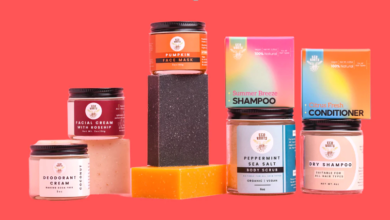How to Choose the Right Toys for Your Baby’s Age

Selecting the right toys for your baby isn’t just about entertainment; it plays a crucial role in their development. With so many options available, it can be overwhelming for new parents to decide what’s best. Your baby’s needs and abilities change rapidly from birth, so it’s important to choose toys that are safe and conducive to their growth. When do babies start playing with toys? Generally, babies begin to engage with toys around 2-3 months, but the types of toys they enjoy will evolve as they grow. This guide will help you understand what toys are appropriate for different developmental stages, ensuring your baby gets the most out of playtime.
Why Age-Appropriate Toys Matter
Benefits of Age-Specific Toys
Age-specific toys are designed to match your baby’s developmental stage, promoting cognitive, motor, and social skills. Toys that are appropriate for their age stimulate their senses, encourage exploration, and support brain development. They help strengthen hand-eye coordination, enhance problem-solving abilities, and nurture creativity. By providing the right toys at the right time, you’re fostering healthy growth and development in a way that’s both engaging and educational, ensuring your baby reaches key milestones effectively.
The Risks of Choosing the Wrong Toys
Choosing the wrong toys can be more than just a missed opportunity for growth; it can be dangerous. Toys not suited for your baby’s age might pose choking hazards or be too advanced, leading to frustration rather than enjoyment. This can hinder their developmental progress and may even result in physical harm or injuries. It’s crucial to select toys that are not only engaging but also safe and suited for your baby’s current skills and abilities.
How to Choose Toys for Different Age Groups
Newborn to 3 Months
In the first few months, your newborn is still adjusting to the world outside the womb. Their vision is limited, focusing mainly on objects within 8 to 10 inches away. High-contrast black and white images or toys, soft rattles, and plush toys with no small parts are ideal as they stimulate sensory development and encourage visual tracking.
Best Toys for Newborns:
- Soft, lightweight rattles
- High-contrast black-and-white cards or mobiles
- Cloth activity books with bold patterns
- Soft plush toys (no small parts)
- Infant play gyms with hanging toys
4 to 6 Months
By 4 to 6 months, babies are more aware of their surroundings and start reaching for objects. They enjoy toys that they can grasp and shake, which help in developing hand-eye coordination. Soft teething toys, baby-friendly mirrors, and activity mats with dangling toys are great choices as they also encourage sensory exploration.
Best Toys for 4 to 6 Months:
- Rattles with different shapes and sounds
- Soft teethers
- Unbreakable baby-friendly mirrors
- Textured fabric toys like crinkly cloth toys
- Activity mats with dangling toys
- Soft, colorful blocks
7 to 12 Months
As babies grow closer to the one-year mark, they become little explorers. They start to sit, crawl, and may even begin to stand with some support. Toys that encourage movement and manipulation, like stacking rings, push-and-pull toys, and interactive books, are excellent for stimulating both fine and gross motor skills. These toys also support the development of cause-and-effect understanding and early language skills.
Best Toys for 7 to 12 Months:
- Stacking toys (like rings or cups)
- Activity centers or baby push toys
- Textured soft balls
- Interactive books with textures and flaps
- Teething toys with different textures
- Shape sorters and building blocks
Read also: Ultimate Guide to Office Sites: Enhancing Your Lifestyle with Mint-Op
What to Look for in a Safe Baby Toy?
Materials and Safety Standards
When selecting infant toys, prioritize safety by choosing non-toxic, BPA-free materials. Look for toys with ASTM or EN71 certifications, which indicate the toy has met stringent safety standards. These certifications ensure the toy is free from harmful chemicals like lead and phthalates. Avoid toys with painted surfaces or finishes that may contain toxic substances. By selecting certified toys made from safe materials, you ensure your baby can play without exposure to harmful chemicals.
Size and Durability
Choose toys that are the right size for your baby’s hands and free from choking hazards. Avoid small parts that could be swallowed. Ensure the toys are durable enough to withstand frequent handling, drops, and rough play. Opt for materials like thick plastic, soft rubber, or cloth that can handle wear and tear. Also, ensure that toys have no sharp edges or detachable parts. Durable, well-sized toys will ensure your baby’s safety and enjoyment while they explore and engage with their environment.

Top Toy Recommendations for Each Age
Best Toys for Newborns
For newborns, choose soft and high-contrast toys that capture their limited range of vision.
- High-contrast black-and-white cards
- Soft, lightweight rattles
- Infant play gyms with hanging toys
Best Toys for 4 to 6 Months
As babies start grasping and exploring more tactile toys, opt for:
- Rattles with different shapes and sounds
- Soft teethers
- Activity mats with dangling toys
Conclusion
Selecting the right toys based on your baby’s developmental stage is essential for their growth and safety. By understanding their needs at each stage, you can provide toys that are engaging, safe, and promote healthy development. Always prioritize non-toxic materials, appropriate sizes, and durability when choosing toys for your little one. Remember, playtime is not just about fun; it’s a critical component of your baby’s early learning and development.



